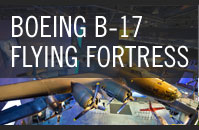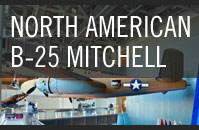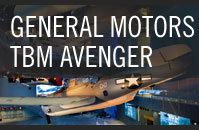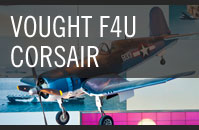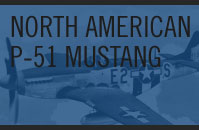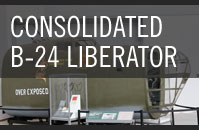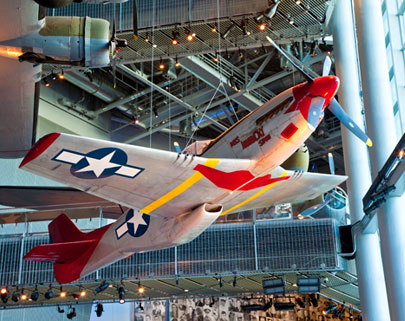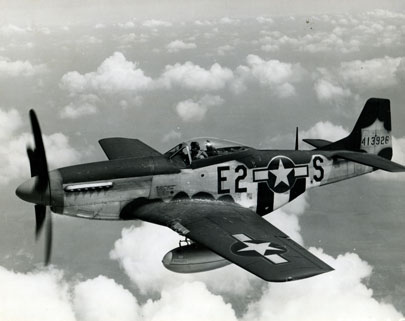WARBIRDS: NORTH AMERICAN P-51 MUSTANG
Controlling the air proved key to controlling the ground. The long-range P-51 Mustang fighter was invaluable to the Allied victory, enabling resumption of strategic bombing after heavy losses suffered by unescorted bombers in 1943. Developed for export to Britain, models modified by the British to use Rolls-Royce Merlin engines became America’s most capable wartime fighters.
P-51 Mustang of the 332nd Fighter Group
The pairing of the legendary Merlin engine and the P-51 Mustang eventually resulted in the P-51D, which provided the US Army Air Forces’ with a high-performance, high-altitude, long range fighter that could escort heavy bomber formations all the way to Berlin and back. The changes significantly reduced the unacceptable loss rates bomber crews had suffered since the daylight bombing campaign began in the summer of 1942.
Between 1941 and 1946, roughly 1,000 African American pilots were trained at a segregated air base in Tuskegee, Alabama. The most famous of the Tuskegee Airmen were the 332nd Fighter Group, also known as the “Red Tails” for the distinctive markings of their planes. The 99th Pursuit Squadron, later renamed the 99th Fighter Squadron, also distinguished themselves in combat. Together they flew more than 15,000 sorties and lost 66 men in the line of duty. This aircraft is painted in the markings of one of the aircraft known to have been flown by the squadron.
Made possible through a gift from the Ricketts Family
Statistics
Type: Fighter
Production
Date Introduced: 1944
Manufacturer: North American
Number Produced: 8,000
Specifications
Crew: 1 (Pilot)
Wingspan: 37 feet
Length: 32 feet
Maximum Speed: 437 miles per hour
Cruising Speed: 275 miles per hour
Maximum Range: 1,000 miles
Engine: Packard Rolls Royce Merlin V-1650-7 (1,695 hp)
Maximum Load: 2,000 pounds of bombs, or ten 5-inch rockets
Armament: Six .50 caliber machine guns
Lt. Colonel Thomas J. Hitchcock Jr., Champion of the P-51 Mustang
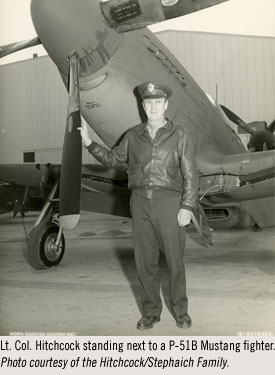 Perhaps no one man had a greater influence over the development and adaptation of the P-51 Mustang than the visionary Lt. Col. Thomas J. Hitchcock Jr. At 17, Hitchcock began his military career during World War I with the French Lafayette Flying Corps after being turned away by the US Army for being too young. Earning his wings with the French, Hitchcock scored three aerial victories before the Germans shot him down and captured him. After being held captive for six months, Hitchcock saw a chance to escape. He jumped from a moving train and walked more than 100 miles to the safety of Switzerland.
Perhaps no one man had a greater influence over the development and adaptation of the P-51 Mustang than the visionary Lt. Col. Thomas J. Hitchcock Jr. At 17, Hitchcock began his military career during World War I with the French Lafayette Flying Corps after being turned away by the US Army for being too young. Earning his wings with the French, Hitchcock scored three aerial victories before the Germans shot him down and captured him. After being held captive for six months, Hitchcock saw a chance to escape. He jumped from a moving train and walked more than 100 miles to the safety of Switzerland.
After the war, Hitchcock became one of the most famous and accomplished polo players of the day, worked as an investment banker, and lived the life of a socialite. His many close friends included writer F. Scott Fitzgerald, who loosely modeled his character Tom Buchanan in The Great Gatsby on Hitchcock. When the United States entered World War II, Hitchcock secured a commission in the US Army Air Force and desperately sought command of a fighter squadron. At 42, however, the US Army Air Force considered him too old for combat.
After his appointment as Assistant Military Air Attaché in London, Hitchcock reported to Washington on the results of British tests involving the North American-built P-51A airframe and the Rolls-Royce Merlin 61 engine. In April 1942, Rolls-Royce test pilot Ronald Hawker evaluated the Mustang—powered by the stock Allison engine—and was impressed by the aircraft’s performance at low and medium altitudes. But Hawker thought performance at higher altitudes could be vastly improved by installing the Merlin 61 engine. The British fitted five test aircraft with the Merlin engine, and the results were nothing short of astounding. Hawker’s assessment proved correct: the Merlin engine powered Mustangs reached speeds in excess of 430 miles per hour at 30,000 feet, almost 100 miles per hour faster than the Allison engine.
Unsurprisingly, Hitchcock’s report to Washington in fall 1942 recommended immediate development of the P-51A into a high-altitude fighter by replacing the Allison engine with the Merlin, which was already being produced for the British in the United States under license by the Packard Motor Company. Hitchcock also predicted the Merlin-powered Mustang would be the best fighter of 1943. The US Army Air Force placed an immediate order for 2,200 of the new P-51Bs, and by the following year the 354th Fighter Group became the first operational unit in the ETO equipped with the engines. The arrival of the P-51B could not have come at a better time. Without the protection of fighter escorts all the way to the target and back, heavy bomber crews suffered unacceptable losses, and deep penetration raids into Germany were suspended until a long range fighter escort was a reality. With the aid of external wing tanks, the Mustang had the range to stay with the B-17 and B-24 bomber formations all the way to targets deep inside Germany, and for the first time the bomber boys had a fighter escort all the way back home to England.
By early 1944, the Mustang’s arrival, along with new aggressive tactics was beginning to change the tide of the air war in the Allies’ favor. During “Big Week,” a weeklong bombing offensive in February 1944 that targeted German fighter aircraft production facilities, Mustang pilots destroyed 17 percent of the Luftwaffe’s experienced fighter pilots in air-to-air combat. In spite of the new aircraft’s wild success, the Mustang was experiencing some troubles with its external wing tanks, as the weight of the fuel had the tendency to destabilize the aircraft while in a dive. Now shepherding the Mustang project as Deputy Chief of Staff of the 9th Air Support Command in charge of tactical research and development, Hitchcock insisted on pinpointing the problem himself rather than risking the lives of his men. Hitchcock was unable to pull his Mustang out of a dive during a test flight on April 18, 1944, and died in the subsequent crash near Salisbury, England.
Hitchcock did not live to see how the P-51 Mustang contributed to the Allied air supremacy, which was a prerequisite for the successful invasion of Normandy just two months later. But by March 1944, with Mustangs escorting the first US daylight bombing raids on Berlin in the skies over the Nazi capital, Hitchcock saw the fighter he had championed achieve the potential he had envisioned for it all the way back in 1942.
Aircraft:
